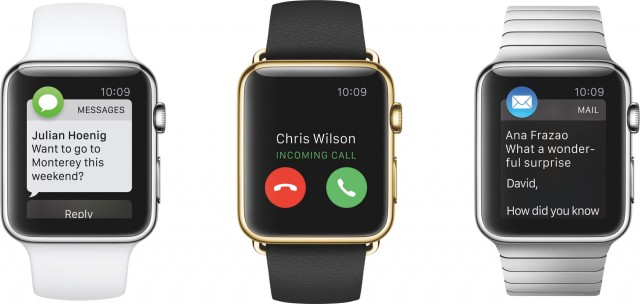You already know sound is something you feel, physically – you know this from the sensation in your head on headphones, from your gut as a PA produces big bass, from the bodily experience of thunderstorms or the siren on an ambulance.
But we may soon live in a world where increasingly the role of sound design is wrapped up in interaction – where those sounds can produce physical sensations and haptic interactions. And whether or not the Apple Watch is used by musicians and DJs with new apps, it could add to possibilities for sound designers.
Wired has a fascinating report on the design process behind the Apple Watch. It’s worth reading and reflection even if you have no interest in buying Apple’s gadget, because the lessons here might apply widely.
And in particular it notes that one of the most essential interactions of the Apple Watch depends on sound design as much as something visual. Vibrations are pretty crude on your phone, but on the watch, they become an essential part of the design – and the success or failure of Apple’s introduction may depend on whether people like the way they convey information, since part of the idea is to avoiding constantly digging your phone out of your pocket.
And here, the line between sound and feeling is basically nonexistent. Wired reports:
Because our bodies are enormously sensitive to taps and buzzes, the Watch can deliver rich information with only slight variations in pace, number, and force of vibrations. One sequence of taps means you’re getting a phone call; a subtly different one means you have a meeting in five minutes.
One sequence of taps means you’re getting a phone call. A subtly different sequence means you have a meeting.
Apple tested many prototypes, each with a slightly different feel. “Some were too annoying,” Lynch says. “Some were too subtle; some felt like a bug on your wrist.” When they had the engine dialed in, they started experimenting with a Watch-specific synesthesia, translating specific digital experiences into taps and sounds. What does a tweet feel like? What about an important text? To answer these questions, designers and engineers sampled the sounds of everything from bell clappers and birds to lightsabers and then began to turn sounds into physical sensations.
They spent over a year on this project. Now I’m curious what a lightsaber feels like.
More:
iPhone Killer: The Secret History of the Apple Watch
This kind of thinking isn’t limited to Apple, either. Tactilu is a project out of Poland that I’ll be writing about soon (though its approach to haptics differs from the sound/vibration-based approach here). And that project, in turn, included tactile/haptic work by Warsaw’s panGenerator that featured in our hacklab at CTM. More on both of those shortly…
